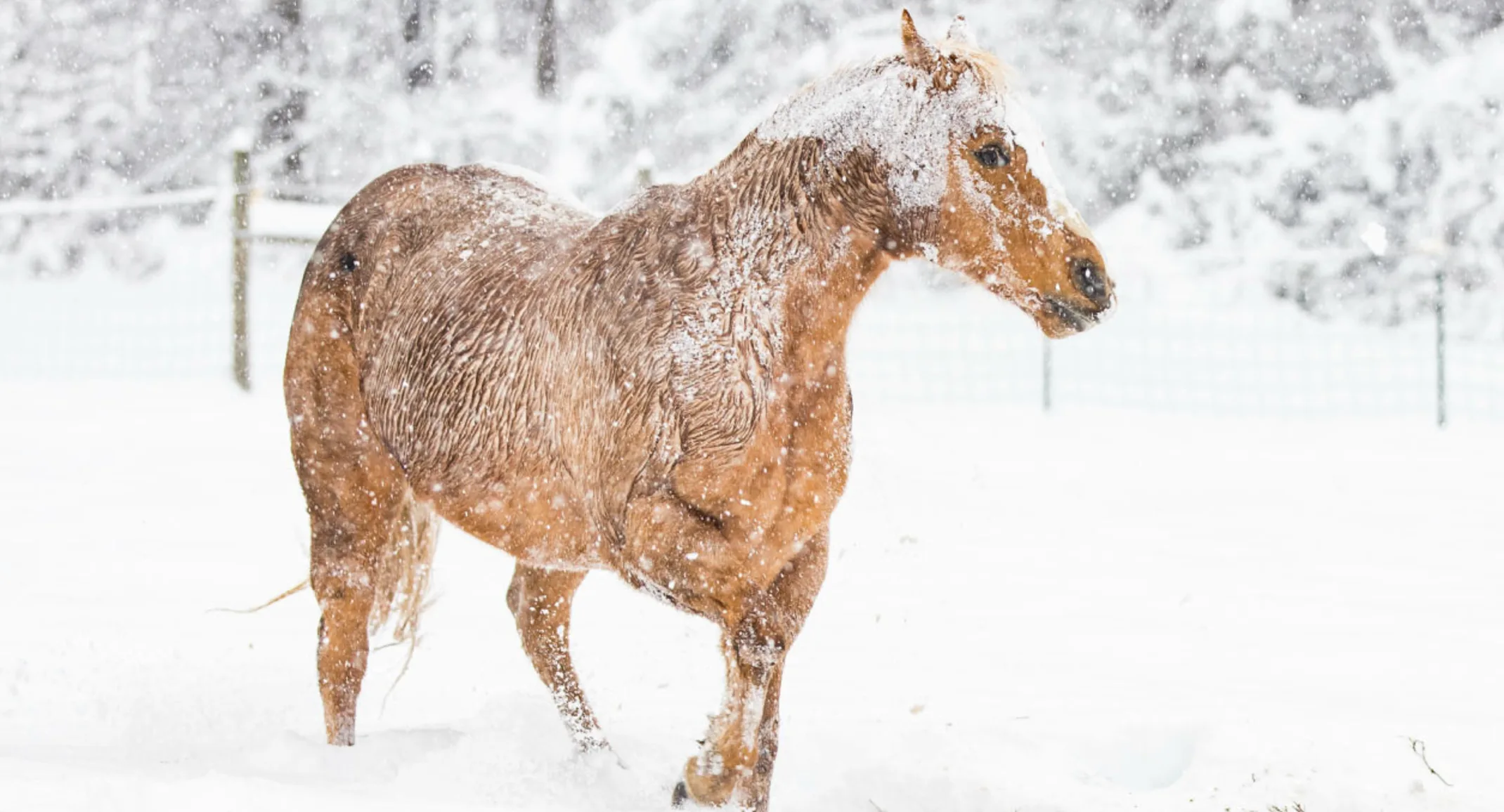Horse Care During a Blizzard
General

The air is crisp and cool, the leaves are falling, and we’re already well into autumn. The cold and snow of winter are just around the corner. As the weatherman is calling for the first blizzard of the year, you’re wondering how to prepare so that your horses make it through the storm safe and sound.
First, determine if the horses are going to weather the storm outside in their fields or inside the barn. If all you have is a run-in shed, the decision has been made for you. Most horses do very well outdoors during a blizzard provided that they have adequate shelter to break the wind. A large, well-built run-in shed will to the trick. If there is even a small question about the structural soundness of your barn, the horses are best left outside. Even standing outside in a field without a run-in shed is preferable to being confined to a barn that could collapse under the weight of the snow. Make sure that all horses that will be spending the storm outside have warm, waterproof blankets or a good, thick winter haircoat.
Next on the list is making sure that you’ll have enough water on hand for all of the horses. This is a particular problem if you rely on well-water and a pump to supply your water. If the electric goes out, you will lose the pump and the water. Fill all outside water troughs to the brim right before the storm is scheduled to hit. If possible, all outside troughs should have heaters in them so that they do not freeze over. If the electric goes out, the heaters won’t work, but they’ll come back on as soon as the power does. Also, fill all water buckets inside the barn and any spare troughs or containers that you have available. In the winter, most horses consume approximately 10 gallons of water per day. Plan to have at least that much on hand per horse for a minimum of 3 days in case it takes a while to get the electric restored.
If you have a generator, make sure that it is in working order and that you have fuel available for it prior to the storm. Nobody needs to be heading to the gas station in a blizzard to get fuel for the generator. Having a generator on hand makes it much easier to guarantee a water supply for yourself and your horses if you rely on a pump.
It is imperative that you are able to get hay to your horses during the storm. If you store your hay in a different building from the barn, move as many bales as you’ll need for about a week into the barn. Having to trudge through deep snow to bring bales to the barn is no fun and can be prevented by a little forethought. Horses residing outdoors will also need a steady supply of hay. Consider getting good quality round bales and placing them in the field ahead of the storm. This will prevent you from having to haul hay out to the horses twice daily, and the horses should have enough to eat for about a week.
If the snow ends up deep enough, you’re going to have great difficulty cleaning your horse’s stall directly after the storm. Banking up extra bedding in the corners of your stalls prior to the storm should help slightly. Try to get at least a wheelbarrow or two of extra bedding piled up in the corners of the stall. If you are unable to get to the manure shed, pile up the soiled bedding and manure in an empty corner of the stall and rake down some of the clean bedding. The stall will not be as clean as you’d like it to be, but your horse will have some warm, dry, clean bedding to lie down in. When a path can finally be cleared to the shed, thoroughly muck out your stalls and re-bed them with clean bedding.
Horses that are not able to be as active as normal for any reason are more prone to impaction colic than other horses. This is especially true during the winter months. It is a good idea to feed them warm wet feed (soaked beet pulp and soaked senior feed) during a storm to increase their water intake and keep the GI system in good working order. Most horses enjoy this type of meal and will readily consume it.
Finally, make sure that you have a fully stocked first aid kit available during any severe storm. If your horse becomes injured or sick, the veterinarian may not be able to reach you if the weather and the roads are too bad. No veterinarian likes to tell an owner of a sick horse “No” but even four-wheel drive trucks cannot negotiate 6 foot high snow drifts. Do not hesitate to contact the on call veterinarian and inform them of the emergency. They will be able to talk you through basic first aid and care for your horse and will be prepared to treat the horse as soon as they are able to get there.
With proper preparation ahead of time, you and your horses should be able to weather whatever Mother Nature decides to throw at us this year.
Michelle Egli, DVM
Delmarva Equine Clinic
